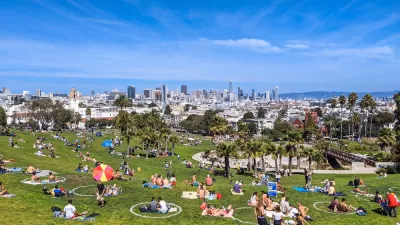For a feature on Technology and the City, Architectural Record examines how the digital economy and tech culture are transforming Chattanooga, Detroit, Austin, and San Francisco. Many changes are welcome, but can urban success become too successful?
"The technology industry is shaping contemporary American cities the way that steel or automobiles did in an earlier era," say the editors of Architectural Record. "But what makes technology such a defining force is how it affects not only the economy but the texture of urban life. Digital enterprises and their young teams infuse the city with disposable income and a taste for microbreweries, rock climbing, food trucks, bike lanes, locally roasted coffee, and just about anything artisanal."
But the tech-driven transformation may not all be for the better. In Austin, a city growing by 120 people a day, affordable housing in the central city is quickly disappearing. "In San Francisco too, the economic boom—as more tech companies seek the urbanity that's missing from Silicon Valley—is making some longtime city dwellers feel a kind of despair for the hippies now being replaced by hipsters," writes Cathleen McGuigan, Editor in Chief.
"Finding the balance between old funkiness and new luster is the challenge of cities. But we don't mean just style or ambience. We mean finding a way for cities to embrace the future while remaining truly democratic, open, and accessible to all."
FULL STORY: Technology and the City

Planetizen Federal Action Tracker
A weekly monitor of how Trump’s orders and actions are impacting planners and planning in America.

Restaurant Patios Were a Pandemic Win — Why Were They so Hard to Keep?
Social distancing requirements and changes in travel patterns prompted cities to pilot new uses for street and sidewalk space. Then it got complicated.

Map: Where Senate Republicans Want to Sell Your Public Lands
For public land advocates, the Senate Republicans’ proposal to sell millions of acres of public land in the West is “the biggest fight of their careers.”

Maui's Vacation Rental Debate Turns Ugly
Verbal attacks, misinformation campaigns and fistfights plague a high-stakes debate to convert thousands of vacation rentals into long-term housing.

San Francisco Suspends Traffic Calming Amidst Record Deaths
Citing “a challenging fiscal landscape,” the city will cease the program on the heels of 42 traffic deaths, including 24 pedestrians.

California Homeless Arrests, Citations Spike After Ruling
An investigation reveals that anti-homeless actions increased up to 500% after Grants Pass v. Johnson — even in cities claiming no policy change.
Urban Design for Planners 1: Software Tools
This six-course series explores essential urban design concepts using open source software and equips planners with the tools they need to participate fully in the urban design process.
Planning for Universal Design
Learn the tools for implementing Universal Design in planning regulations.
Heyer Gruel & Associates PA
JM Goldson LLC
Custer County Colorado
City of Camden Redevelopment Agency
City of Astoria
Transportation Research & Education Center (TREC) at Portland State University
Camden Redevelopment Agency
City of Claremont
Municipality of Princeton (NJ)




























